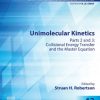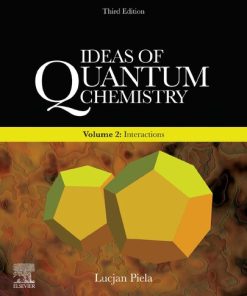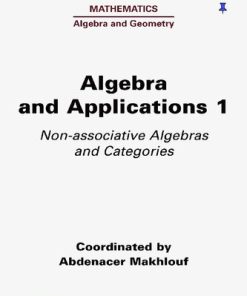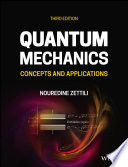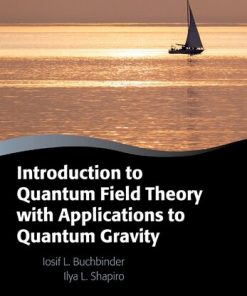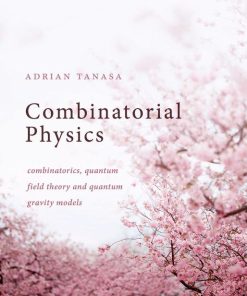(Ebook PDF) Non Covalent Interactions in Quantum Chemistry and Physics Theory and Applications 1st Edition by Alberto Otero De La Roza, Gino Dilabio 0128098368 9780128098363 full chapters
$50.00 Original price was: $50.00.$25.00Current price is: $25.00.
Non-Covalent Interactions in Quantum Chemistry and Physics. Theory and Applications 1st Edition by Alberto Otero De La Roza, Gino A. Dilabio – Ebook PDF Instant Download/DeliveryISBN: 0128098368, 9780128098363
Full download Non-Covalent Interactions in Quantum Chemistry and Physics. Theory and Applications 1st Edition after payment.
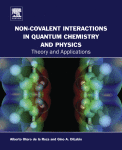
Product details:
ISBN-10 : 0128098368
ISBN-13 : 9780128098363
Author: Alberto Otero De La Roza, Gino A. Dilabio
Non-covalent Interactions in Quantum Chemistry and Physics: Theory and Applications provides an entry point for newcomers and a standard reference for researchers publishing in the area of non-covalent interactions. Written by the leading experts in this field, the book enables experienced researchers to keep up with the most recent developments, emerging methods, and relevant applications.
The book gives a comprehensive, in-depth overview of the available quantum-chemistry methods for intermolecular interactions and details the most relevant fields of application for those techniques. Theory and applications are put side-by-side, which allows the reader to gauge the strengths and weaknesses of different computational techniques.
Non-Covalent Interactions in Quantum Chemistry and Physics. Theory and Applications 1st Table of contents:
Part I: Theory
Chapter 1: Physical Basis of Intermolecular Interactions
Abstract
1.1. Introduction
1.2. Electrostatic Interactions
1.3. Exchange Repulsion
1.4. Induction
1.5. Dispersion
1.6. Examples
1.7. Summary
References
Chapter 2: Energy Partition Analyses: Symmetry-Adapted Perturbation Theory and Other Techniques
Abstract
Acknowledgments
2.1. Introduction
2.2. The Long-Range Limit and Perturbation Theory
2.3. Symmetry Adapted PTs: Basic Formalism and Flavors
2.4. Supermolecular EDAs
2.5. Physical and Chemical Insight: Comparison of Energetic Terms
2.6. Overview and Conclusions
References
Chapter 3: Intermolecular Interaction Energies from Kohn–Sham Random Phase Approximation Correlation Methods
Abstract
List of Acronyms
Acknowledgments
3.1. Intermolecular Interactions and the Electron Correlation Problem
3.2. The Revival of the RPA as a Ground-State Electron Correlation Method
3.3. Derivation of the RPA
3.4. Beyond Direct RPA
3.5. Interaction Energy Benchmarks
3.6. RPA in Intermolecular Perturbation Theory
3.7. σ-Stacking Versus π-Stacking Interactions
3.8. Interaction Energies for Large Organic Complexes
3.9. Summary
References
Chapter 4: Wavefunction Theory Approaches to Noncovalent Interactions
Abstract
Acknowledgments
4.1. The Challenges of Modeling Noncovalent Interactions
4.2. Definitive Results Using Coupled-Cluster Theory
4.3. Coupled-Cluster Approaches for Larger Systems
4.4. Evaluating Approximate Methods
References
Chapter 5: The Exchange-Hole Dipole Moment Dispersion Model
Abstract
Acknowledgments
5.1. The Perturbation Theory of Dispersion
5.2. The XDM Dispersion Energy
5.3. The Role of the Base Functional
5.4. The Solid State: XDM for Periodic Systems
5.5. Conclusions
References
Chapter 6: A Comprehensive Overview of the DFT-D3 London-Dispersion Correction
Abstract
Acknowledgments
6.1. Introduction
6.2. Theoretical Background
6.3. Availability of DFT-D3
6.4. Discussion and Examples
6.5. Summary
References
Chapter 7: Atom-Centered Potentials for Noncovalent Interactions and Other Applications
Abstract
7.1. Introduction
7.2. A Brief Theoretical Background on Effective Core Potentials
7.3. Beyond Potentials Representing Core Electrons: ACPs for Application in QMMM Calculations
7.4. ACPs for Improving DFT in Noncovalently Interacting Systems
7.5. ACPs for Improved Descriptions of Covalent Bonds and Noncovalent Interactions
7.6. ACPs for Basis Set Incompleteness
7.7. Summary and Outlook
References
Chapter 8: The vdW-DF Family of Nonlocal Exchange-Correlation Functionals
Abstract
Acknowledgments
8.1. Why a Nonlocal Correlation Density Functional?
8.2. Exchange and Correlation in DFT
8.3. Learning from the Asymptotic Limit
8.4. Derivation of vdW-DF
8.5. Importance of Being Electron Focused
8.6. Overview of Nonlocal Functional Releases and Variants
8.7. Current Status and Future Developments
References
Part II: Applications
Chapter 9: Noncovalent Interactions in Organic Electronic Materials
Abstract
Acknowledgments
9.1. Introduction
9.2. Materials Design Motifs
9.3. Noncovalent Interactions in Molecular Materials
9.4. Synopsis
References
Chapter 10: Noncovalent Interactions in Molecular Crystals
Abstract
Acknowledgments
10.1. Introduction
10.2. Techniques for Modeling Molecular Crystals
10.3. Representative Applications
10.4. Summary
References
Chapter 11: Molecular Crystal Structure Prediction
Abstract
Acknowledgments
11.1. Why Predict Organic Crystal Structures?
11.2. Background on Crystal Structure Prediction
11.3. Blind Test of Crystal Structure Prediction
11.4. CSP as an Aid in Pharmaceutical Development
11.5. Chiral Separation by Crystallization
11.6. Conclusions and Future Challenges
References
Chapter 12: Noncovalent Interactions and Environment Effects
Abstract
12.1. Introduction
12.2. The Effective Hamiltonian
12.3. Polarizable Embeddings
12.4. Beyond the SCF Energy
12.5. Outlook
References
Chapter 13: Surface Adsorption
Abstract
Symbols
Acknowledgments
13.1. Introduction
13.2. Dobson’s Classification Scheme for Dispersion Energy Components and Their Application to Asymptotic Scaling Laws for Some Paradigmatic Situations
13.3. Contributions to the Dispersion Interaction Included in Modern Computational Methods
13.4. Benzene on Cu, Ag, and Au Surfaces
13.5. Strong van der Waals Forces: 1,10-Phenanthroline Monolayers on Au(111)
13.6. The Dispersive Nature of the Au–S Bond to Surfaces and Nanoparticles
13.7. Dispersion and Free Energy Calculations of SAM Formation and Polymorphism from Solution
13.8. Computational Efficiency
13.9. Conclusions
References
Chapter 14: Noncovalent Interactions in Nanotechnology
Abstract
Acknowledgments
14.1. Introduction
14.2. Relevant Noncovalent Interactions
14.3. Growth
14.4. Layered Materials
14.5. Noncovalent Interactions in Nanoporous Materials
14.6. Noncovalent Interactions in Soft Matter
14.7. Conclusion and Outlook
People also search for Non-Covalent Interactions in Quantum Chemistry and Physics. Theory and Applications 1st:
what are non covalent interactions
non covalent interactions meaning
non covalent interactions examples
types of non covalent interactions
non-covalent interactions strongest to weakest
Tags:
Non Covalent,Interactions,Quantum Chemistry,Physics,Theory,Applications,Alberto Otero De La Roza,Gino Dilabio
You may also like…
Chemistry
Chemistry at the Frontier with Physics and Computer Science: Theory and Computation 1st Edition
Business & Economics
Chemistry - Biochemistry
Chemistry and Biology of Non-canonical Nucleic Acids 1st Edition Naoki 3527345213 9783527345212
Engineering
Ideas of Quantum Chemistry: Volume 1: From Quantum Physics to Chemistry 3rd Edition Lucjan Piela
Mathematics - Algebra
Algebra and Applications 1: Non-associative Algebras and Categories 1st Edition Makhlouf
Physics - Quantum Physics
Physics - Quantum Physics
Introduction to Quantum Field Theory with Applications to Quantum Gravity 1st Edition


